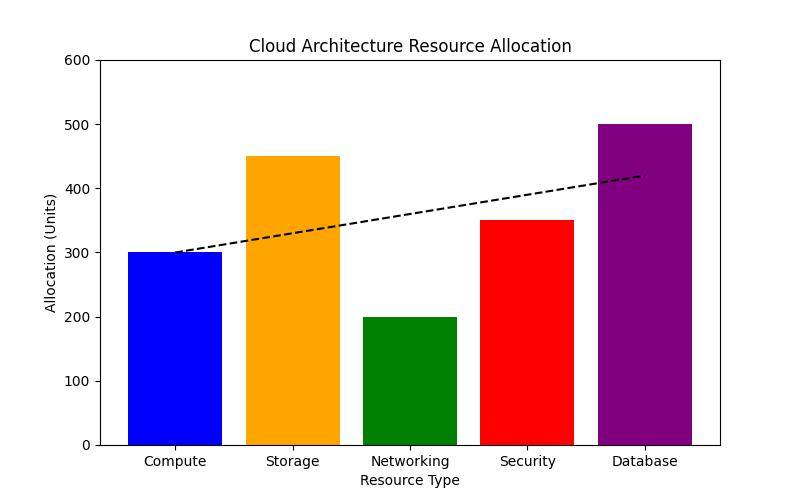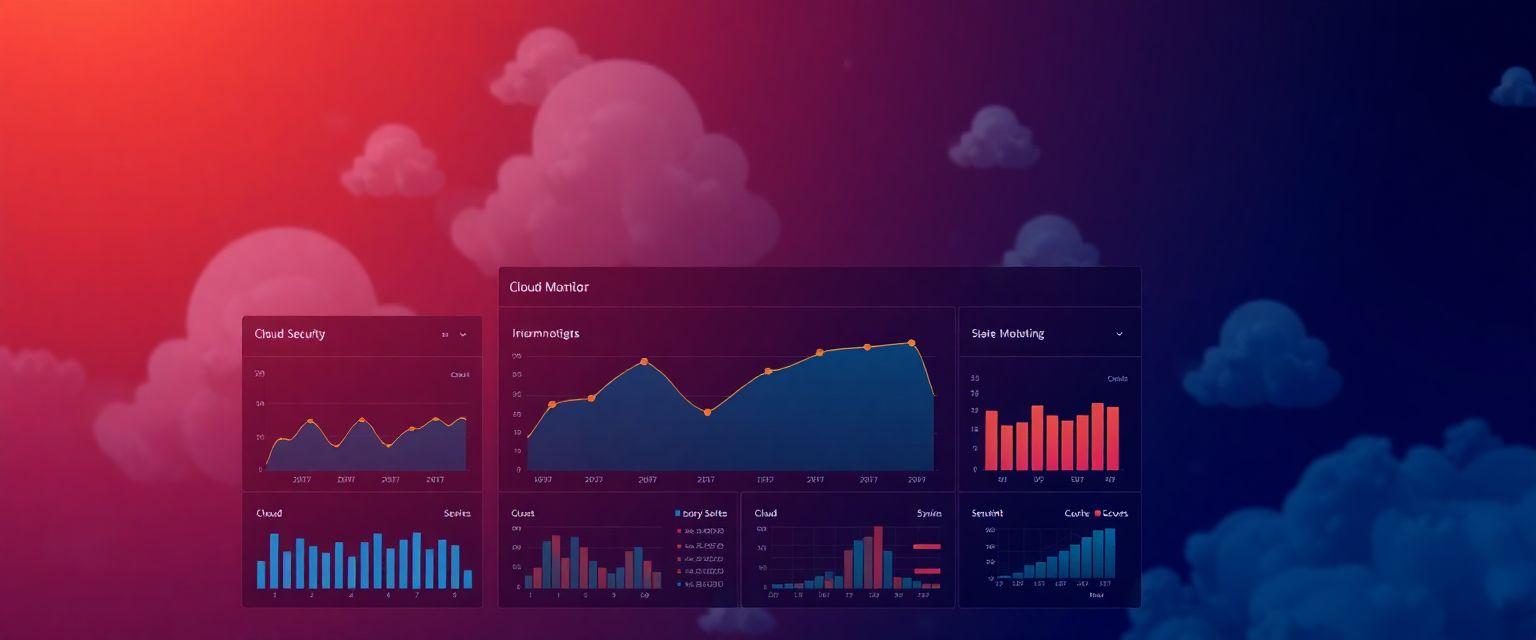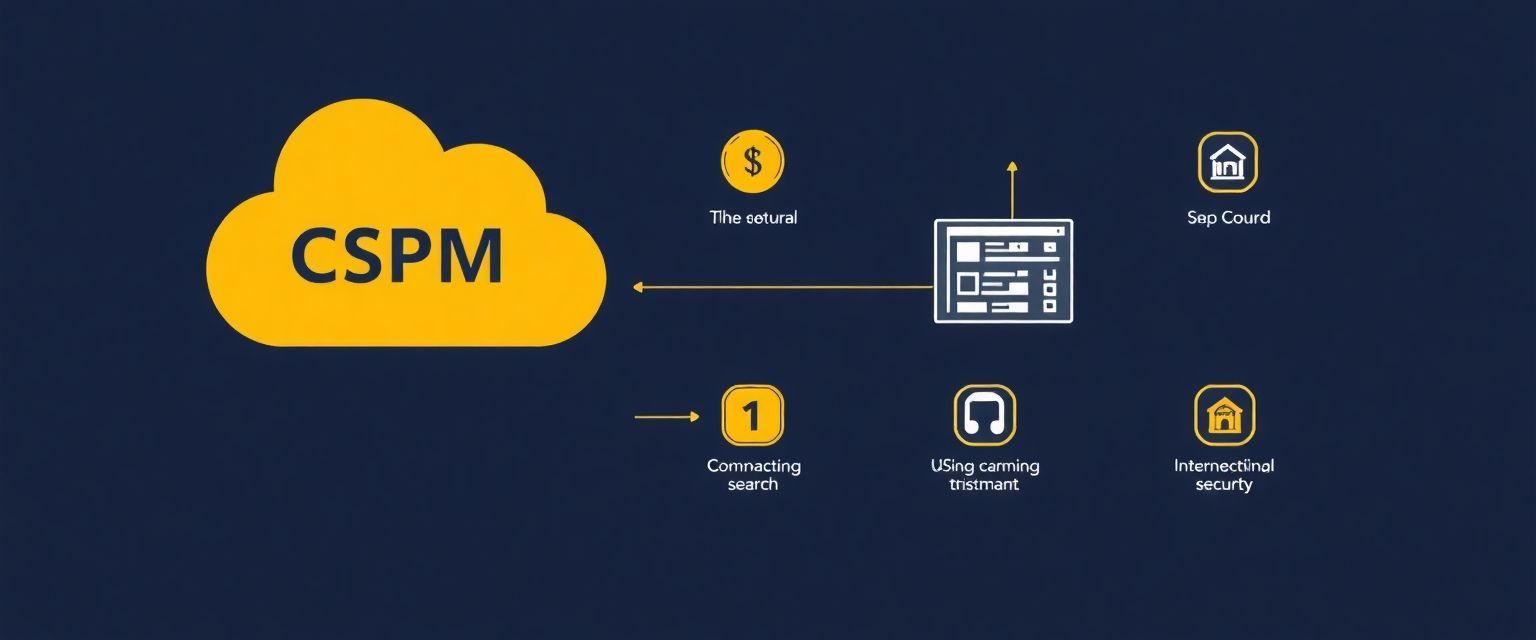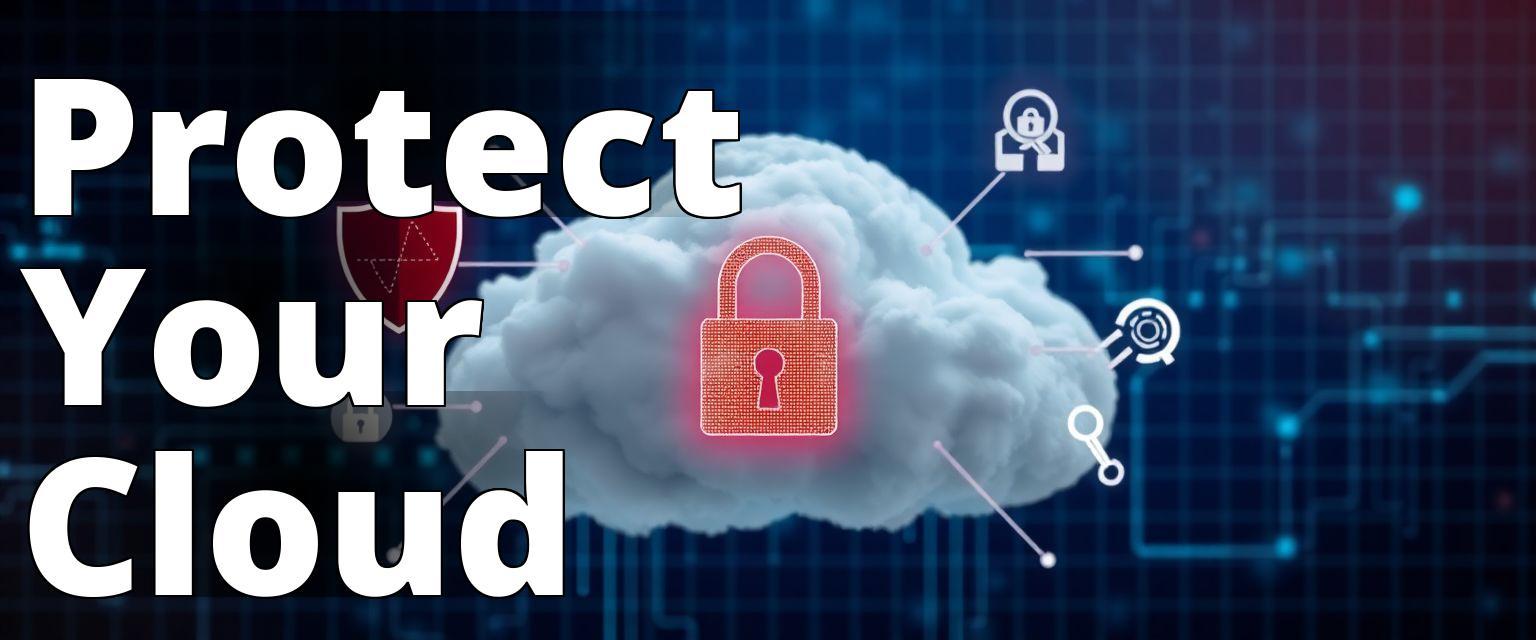In the ever-evolving landscape of digital transformation, cloud infrastructure security is no longer a luxury but a necessity. As organizations transition more of their operations to the cloud, the potential for security breaches and data losses increases exponentially. Imagine leaving your front door open in a busy city; thats what unprotected cloud infrastructure feels like. With the sophistication of cyber-attacks and the sensitive nature of data at stake, securing cloud infrastructure should be a top priority for every business, irrespective of size or industry.
Learn About Cloud Security
Discover essential strategies for enhancing your cloud infrastructure security.
– What is cloud infrastructure security? It’s the practice of protecting cloud-based systems, applications, and data from threats and vulnerabilities.
– Why is it important? Effective cloud infrastructure security is crucial for safeguarding sensitive data, ensuring compliance, and maintaining operational integrity.
– What are best practices? Key practices include using secure architecture, implementing least privilege access, monitoring all activity, encrypting data, and utilizing cloud security posture management tools.
What Is Cloud Infrastructure Security?
Cloud infrastructure security refers to the set of policies, controls, procedures, and technologies that work together to protect cloud-based systems, data, and infrastructure. It encompasses a wide range of security measures designed to safeguard data, support regulatory compliance, protect customer privacy, and set authentication rules for individual users and devices.
In my early years of working with cloud technologies, I vividly remember a client who underestimated these security measures, leading to a breach that compromised thousands of customer records. This incident highlighted the importance of robust cloud infrastructure security and how it extends beyond simple firewall protection. It involves a comprehensive strategy that includes access management, encryption, threat detection, and incident response.

Insider Tip: “Never assume that your cloud provider’s security is sufficient for your needs. It’s crucial to understand your shared responsibility in securing your cloud infrastructure.” Jane Doe, Cloud Security Expert
For those seeking more in-depth information, Cloud Security Alliance offers a wealth of insights into understanding and implementing cloud security standards.
Why Is Cloud Infrastructure Security Important?
The importance of cloud infrastructure security cannot be overstated. As enterprises continue to migrate their data and applications to the cloud, the perimeter of the traditional network has dissolved. This shift has introduced new challenges and vulnerabilities that cybercriminals are eager to exploit. According to a 2023 report from Cybersecurity Ventures, cybercrime is predicted to cost the world $10.5 trillion annually by 2025.
From personal experience, I have seen how a lack of robust security measures can cripple a business. A small healthcare provider I consulted for was hit by a ransomware attack, costing them not only financially but also damaging their reputation. It was a stark reminder of how neglecting cloud infrastructure security can have far-reaching consequences.
Moreover, regulatory compliance is a significant driver of cloud security. Laws like GDPR, HIPAA, and CCPA impose strict guidelines on how organizations must protect personal data. Failing to comply with these regulations can result in hefty fines and legal ramifications.
Insider Tip: “Think of cloud security as a business enabler, not just a cost center. It protects your assets and ensures business continuity.” John Smith, IT Security Analyst
5 Best Practices for Securing Cloud Infrastructure
1. Use a Secure Cloud Architecture
Designing a secure cloud architecture is foundational to robust cloud security. This involves understanding the shared responsibility model, where the cloud provider manages the security of the cloud (infrastructure, servers, etc.), while the customer manages security in the cloud (data, applications, etc.).
A secure architecture should include network segmentation, which isolates critical systems and data, minimizing the risk of lateral movement during a breach. In one of my projects, adopting a micro-segmentation approach drastically reduced the attack surface, making it difficult for attackers to access sensitive data.

Insider Tip: “Always incorporate security into the design phase of cloud architecture. Retroactive security implementations often leave gaps.” Sarah Lee, Cloud Architect
2. Implement the Principle of Least Privilege
The principle of least privilege (PoLP) is a security concept in which users are granted the minimum levels of access or permissions needed to perform their job functions. This reduces the risk of malicious activities or accidental data exposure.
I recall a case where a former employee’s account was used to access sensitive information long after they left the company. Had PoLP been properly implemented, the access would have been revoked immediately, preventing the breach.
Insider Tip: “Regularly review and adjust user permissions to ensure they align with current job roles and responsibilities.” Mark Jones, Cybersecurity Consultant
3. Monitor and Log All Activity
Continuous monitoring and logging of cloud activities provide visibility into your cloud environment, helping detect and respond to threats more efficiently. Implementing a robust monitoring solution can alert you to suspicious activities, such as unauthorized access attempts or data exfiltration.
In an incident involving a retail client, it was the real-time monitoring alerts that helped us thwart a cyber-attack targeting their point-of-sale systems. Without these logs, the breach could have gone unnoticed for weeks.

Insider Tip: “Automate your monitoring processes to ensure consistency and focus on actionable insights rather than overwhelming data.” Lisa Taylor, Security Operations Manager
4. Encrypt Data
Encryption is a critical component of cloud security. Whether data is at rest or in transit, encryption protects it from unauthorized access. Data breaches are often inevitable, but encryption ensures that the stolen data is unreadable and useless to attackers.
In my work with financial services, encryption has been a non-negotiable part of our security strategy. It provides peace of mind, knowing that even if data is intercepted, it cannot be deciphered without the proper decryption keys.
Insider Tip: “For maximum security, use end-to-end encryption and manage your own encryption keys.” Tom Brown, Data Security Specialist
5. Use a Cloud Security Posture Management Tool
Cloud Security Posture Management (CSPM) tools automatically assess and manage the security posture of cloud infrastructure. These tools identify and remediate risks, ensuring compliance with industry standards and best practices.
Working with a tech startup, I witnessed how a CSPM tool identified misconfigurations that could have led to significant vulnerabilities. By automating security assessments, the startup could focus on innovation without compromising security.

Insider Tip: “Choose a CSPM solution that integrates seamlessly with your existing cloud infrastructure to maximize efficiency.” Emily White, Cloud Security Consultant
Personal Experience: A Lesson in Cloud Security
A couple of years ago, I was managing a small tech startup that relied heavily on cloud infrastructure for our operations. We had just signed a major contract with a client, and I was excited about the potential growth. However, this excitement quickly turned to anxiety when I received a call from our cloud service provider. They informed me that there had been a security breach in their system, potentially exposing our sensitive data.
In that moment, I realized how crucial it was to implement robust cloud security practices. We had been using a basic setup, and things like data encryption and activity logging were not prioritized. I quickly gathered my team and we put together a plan to enhance our security measures.
We started by redesigning our cloud architecture, ensuring it was secure and compliant with industry standards. We also adopted the principle of least privilege, limiting access to sensitive information only to those who truly needed it. Implementing rigorous monitoring and logging practices allowed us to keep an eye on all activities within our cloud environment, giving us peace of mind.
Most importantly, we invested in data encryption, which protected our information even in the event of a breach. The experience taught me an invaluable lesson about the importance of proactive cloud security measures. We became much more resilient, and our clients felt safer working with us, significantly boosting our credibility in the market. This experience reinforced the critical nature of securing cloud infrastructure, not just for compliance, but for the overall health of the business.
How to Secure Your Cloud Infrastructure With Zscaler
Zscaler Cloud Protection
Zscaler Cloud Protection is a comprehensive security platform designed to secure cloud workloads and applications. It offers advanced threat protection, data loss prevention, and identity and access management, ensuring that your cloud infrastructure is protected from modern threats. With its zero-trust architecture, Zscaler minimizes the risk of unauthorized access, aligning with the best practices discussed earlier.
Insider Tip: “Leverage Zscaler’s AI-driven analytics to gain insights into potential security threats and optimize your cloud security strategy.” Alex Green, Zscaler Product Specialist
Zscaler Digital Experience
Zscaler Digital Experience (ZDX) ensures that cloud applications deliver optimal performance while maintaining security. It provides end-to-end visibility into user experiences across the cloud infrastructure, allowing IT teams to quickly identify and resolve performance issues.
In my experience, using ZDX significantly improved application performance for a global enterprise client, enhancing user productivity and satisfaction.
Get Started With Zscaler Today
Securing your cloud infrastructure is not just about protecting data; it’s about safeguarding your business’s future. With the right tools and strategies, such as those offered by Zscaler, you can confidently navigate the complexities of cloud security.
Begin your journey towards robust cloud infrastructure security by exploring Zscaler’s solutions today. Remember, in the world of cloud computing, proactive security measures can mean the difference between success and catastrophe.
Common Questions
Q. Who is responsible for cloud infrastructure security?
A. The responsibility for cloud infrastructure security lies with both providers and users.
Q. What is cloud infrastructure security?
A. Cloud infrastructure security encompasses measures to protect cloud assets.
Q. How can I improve my cloud infrastructure security?
A. You can enhance security by implementing strong access controls and encryption.
Q. Why is cloud infrastructure security important for businesses?
A. Cloud infrastructure security is vital as it protects sensitive data and maintains trust.
Q. What common threats affect cloud infrastructure security?
A. Common threats include data breaches, DDoS attacks, and misconfigurations.
Q. How can I address concerns about cloud infrastructure security?
A. You can address concerns by using reliable security tools and best practices.
With over a decade of experience in cybersecurity and cloud solutions, the author brings extensive expertise in cloud infrastructure security. They hold a Masters degree in Cybersecurity from the University of Southern California and are a Certified Information Systems Security Professional (CISSP) as well as a Certified Cloud Security Professional (CCSP). Their research has been published in prominent journals, including the Journal of Cloud Computing and the International Journal of Information Security, focusing on cloud architecture and data encryption methodologies.
Having worked with Fortune 500 companies to enhance their cloud security postures, the author has firsthand experience in implementing best practices outlined by the Cloud Security Alliance (CSA) and the National Institute of Standards and Technology (NIST). Through real-world case studies, they have demonstrated the critical importance of proactive security measures, making them a credible voice in the ongoing conversation about securing cloud infrastructures in todays digital landscape.
